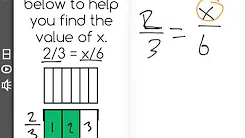Explain why a fraction a/b is equivalent to a fraction (n × a)/(n × b) by using visual fraction models, with attention to how the number and size of the parts differ even though the two fractions themselves are the same size. Use this principle to recognize and generate equivalent fractions. (Grade 4 expectations in this domain are limited to fractions with denominators 2, 3, 4, 5, 6, 8, 10, 12, and 100.)
The apps, sample questions, videos and worksheets listed below will help you learn Equivalent Fractions.
Coherence Map of 4.NF.A.1
The Coherence Map shows the relationships among the Common Core Standards. The Lumos coherence map not only provides graphical representation and convenient navigation within the standards map but also access to thousands of engaging learning & lesson plan resources such as Practice questions, Videos, Books and Infographics related to every standard. It helps educators and students visually explore the learning standards. It's an effective tool to helps students progress through the learning standards. Teachers can use this tool to develop their own pacing charts and lesson plans.
Standard Description of 4.NF.A.1
Explain why a fraction a/b is equivalent to a fraction (n × a)/(n × b) by using visual fraction models, with attention to how the number and size of the parts differ even though the two fractions themselves are the same size. Use this principle to recognize and generate equivalent fractions. (Grade 4 expectations in this domain are limited to fractions with denominators 2, 3, 4, 5, 6, 8, 10, 12, and 100.)





